In South Africa, celebration has a signature sparkle — and it’s called Méthode Cap Classique (MCC). Whether it’s a wedding, a birthday, a long-awaited reunion, or simply a sunset worth remembering, MCC is how we mark the moment. Especially as we head into the festive season, this homegrown bubbly brings something joyful to the table — or to the bushveld.
Explore the African bush on foot: An unforgettable safari experience
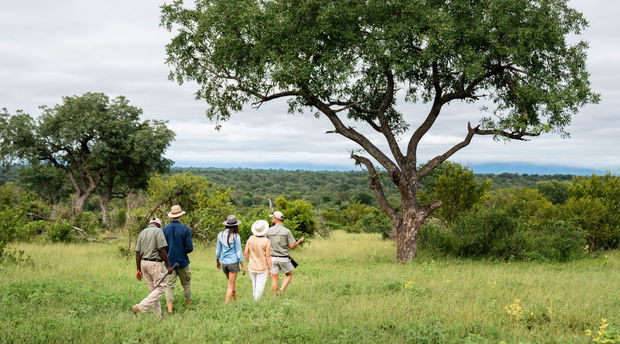
There’s something truly unique about exploring the African bush on foot. A walking safari awakens a deep connection to nature - something that can’t be fully experienced from a safari vehicle. With each careful step, you tune into the sights, sounds, and textures around you, uncovering a world teeming with life and wonder.
At Shumbalala Game Lodge, this immersive experience is a chance to slow down, appreciate the small wonders of the bushveld, and connect with the natural world in a way that stays with you long after your journey ends.
Tracks, dung, and signs of wildlife
One of the first things you’ll learn on a walking safari is how to read the bush. Our experienced guides are experts in tracking, able to interpret the subtle clues left behind by animals.
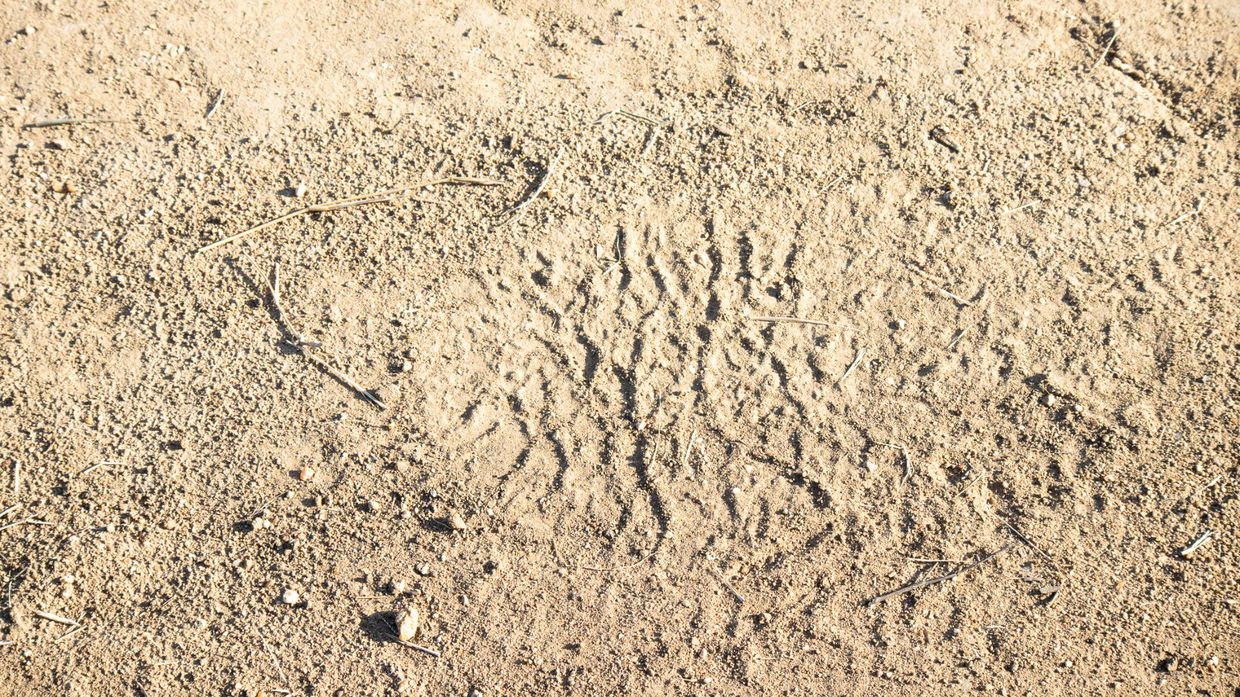 Image of an elephant track
Image of an elephant track
You might come across the large, rounded footprints of an elephant or the clawed tracks of a lion that travelled this path during the night. But it’s not just tracks that tell a story - dung is another important clue. For example, elephant dung with larger, coarse pieces may indicate that an older bull has passed by. As elephants age, their teeth wear down, making it harder for them to chew thoroughly.
Smaller creatures also leave distinct marks - porcupines may drag quills behind them, while terrapins leave delicate trails in the sand after emerging from waterholes. Learning to recognise these signs makes you feel like part of the wilderness, piecing together stories of animals that passed through just hours before.
Insects and reptiles: nature’s hidden gems
On foot, you’ll start to notice the bush’s smallest inhabitants - insects and reptiles that often go unnoticed. Keep an eye out for dung beetles tirelessly rolling their precious cargo or giant millipedes making their slow journey across the ground. If you’re lucky, you might even spot a chameleon, camouflaged among the leaves, their slow movements blending perfectly with their surroundings.
Right now, the bush is buzzing with activity as insects come alive in the warm season, enriching the ecosystem with their role as pollinators and recyclers. Among the most enchanting are butterflies, fluttering gracefully, adding a splash of colour to the bush.
Meet the dwarf mongoose
A walking safari often reveals encounters with smaller mammals like dwarf mongooses - Africa’s smallest carnivores. These curious creatures live in tight-knit family groups, often taking shelter in abandoned termite mounds. If you stand quietly, you might see one darting out to investigate, only to scurry back to safety after a curious stare.
Their interactions are fascinating to watch, with designated “guards” standing sentry to warn of predators while others forage for insects. And here’s a fun fact: ask your guide about their surprisingly large droppings - it’s a story you won’t forget!
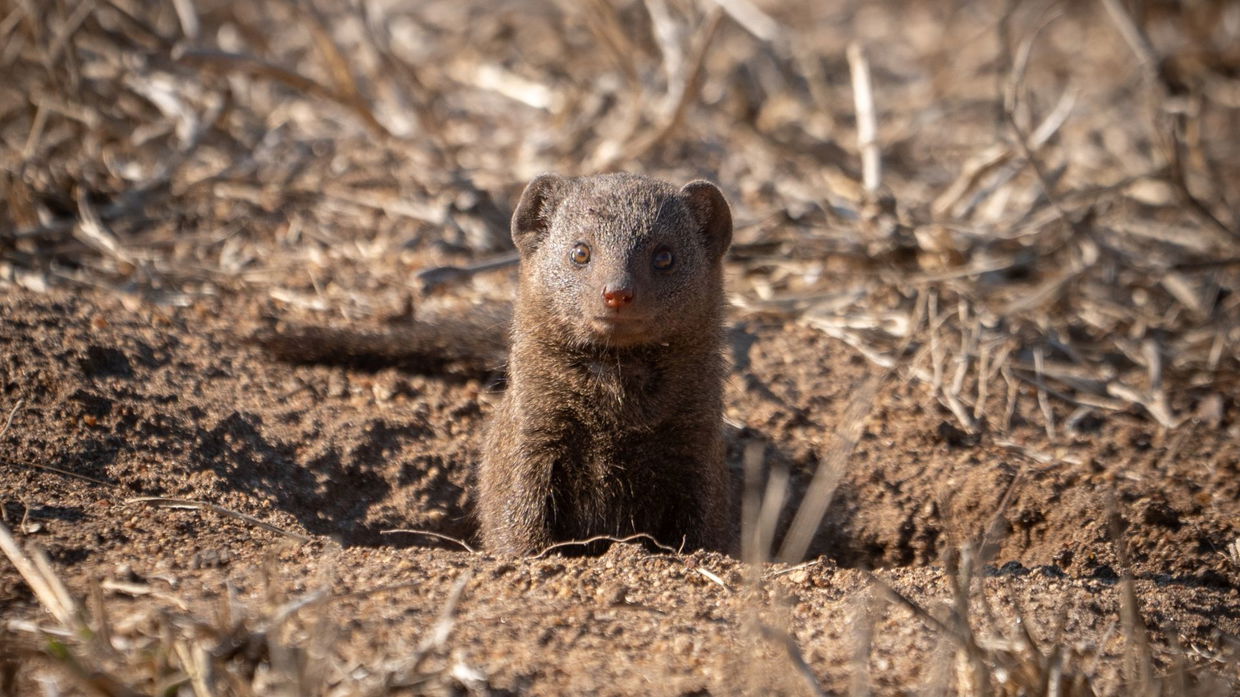 Image: Dwarf mongoose by Jordi Woerts
Image: Dwarf mongoose by Jordi Woerts
Termite mounds: a closer look
Termite mounds are another marvel of the bush, acting as both homes and air-conditioning systems for their industrious inhabitants. Place your hand on the surface, and you can often feel the warmth radiating from within. Depending on the time of day, mounds may be active, with termites busily reinforcing their walls.
Our guides can explain the incredible role termites play in the ecosystem, breaking down plant material and creating nutrient-rich soil that supports the surrounding vegetation.
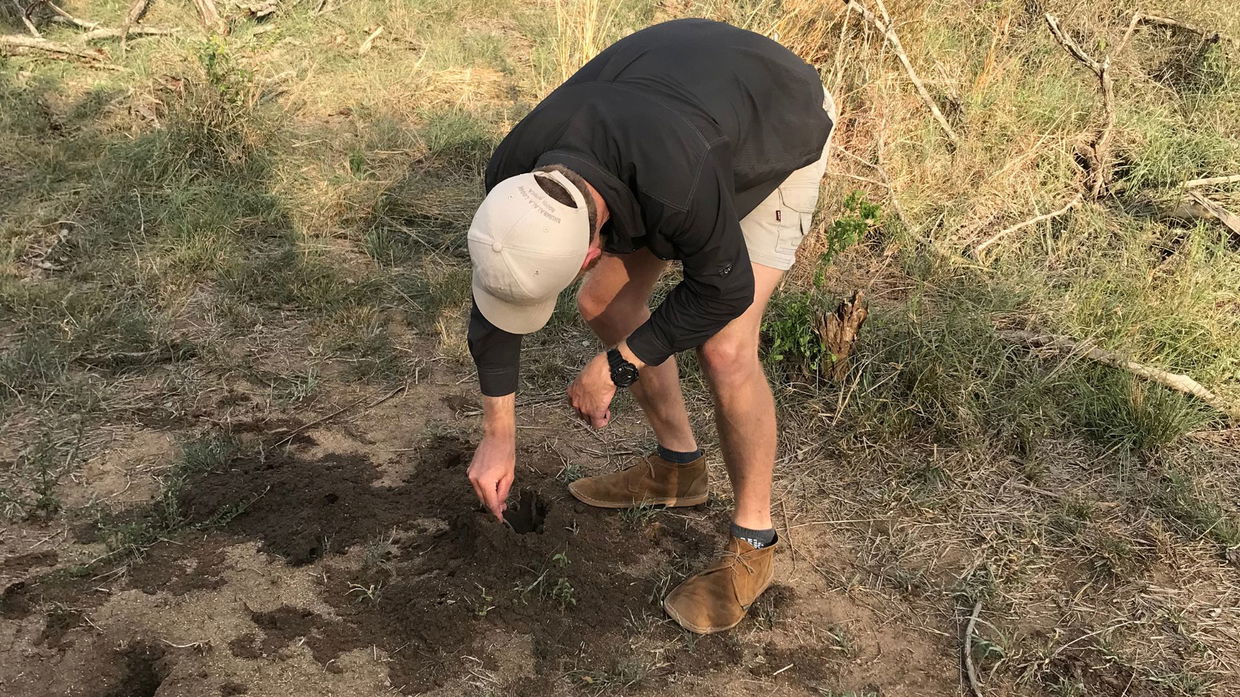 Image: Field guide Bryce showing us a termite mound.
Image: Field guide Bryce showing us a termite mound.
The magic of trees: marula and more
Walking safaris also offer a chance to connect with the trees of the bushveld, each with its own story. One iconic species is the marula tree, which is bearing fruit this time of year - a delicious treat loved by elephants and many other animals! The fruit is also valued by locals, who use it to make jams, juices, and even a famous alcoholic drink.
To deepen the experience, run your hands over the rough, textured bark and learn how the tree has been used in traditional medicine. Trees like these offer a sensory connection to both nature and local culture.
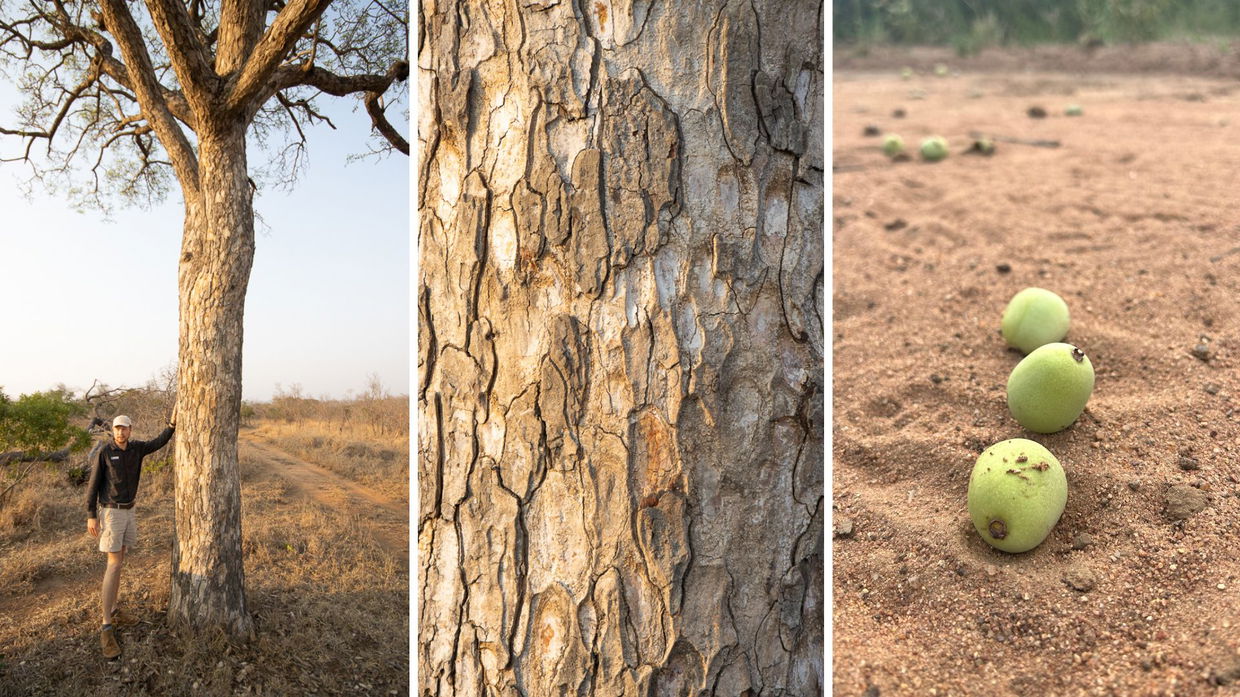 Image: Marula tree with fruits.
Image: Marula tree with fruits.
Spotting the leopard tortoise
As you wander, you might encounter a leopard tortoise, slowly ambling across the trail. Named for its beautifully patterned shell, this gentle reptile is one of the ‘Little Five’ and can live for several decades. Tortoises are a reminder of the bush’s quieter, slower moments - nature’s patient survivors in a world that’s always changing.
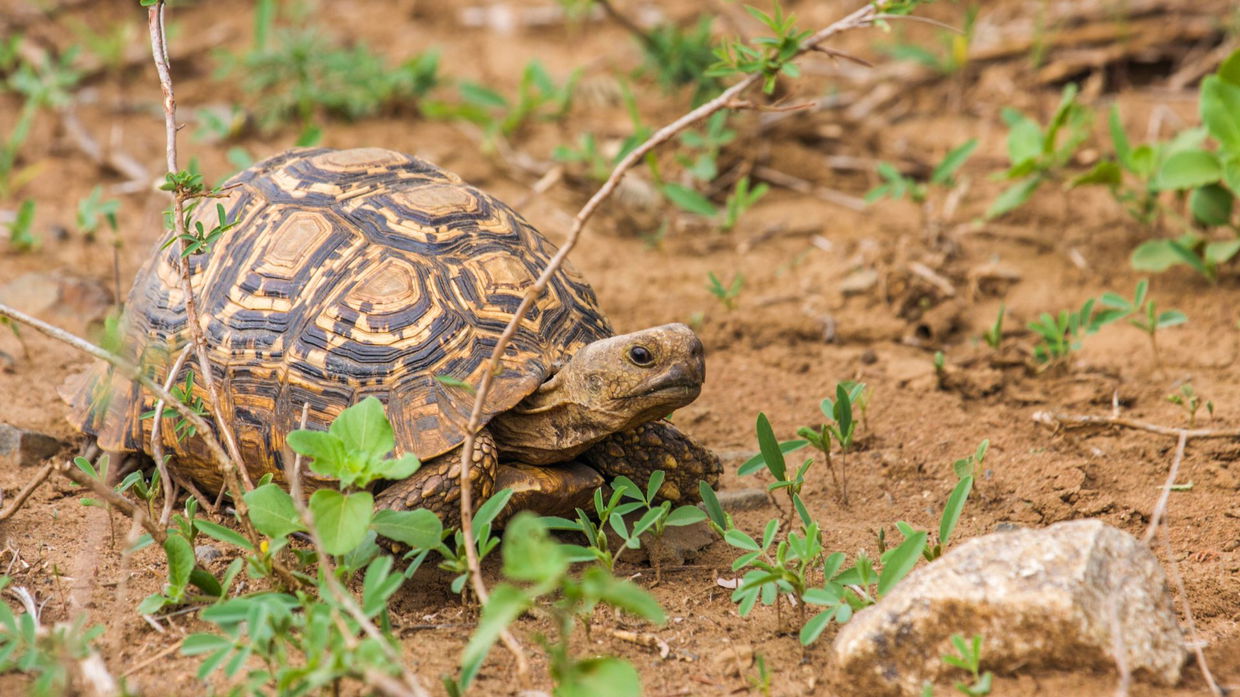 Image: Leopard tortoise
Image: Leopard tortoise
A sensory experience like no other
A walking safari isn’t just about what you see; it’s about engaging all your senses. The earthy scent of the bush, the rustling of grass, and the chatter of birds all heighten your awareness. These sensory experiences create a deeper understanding of the interconnectedness of life in the wild.
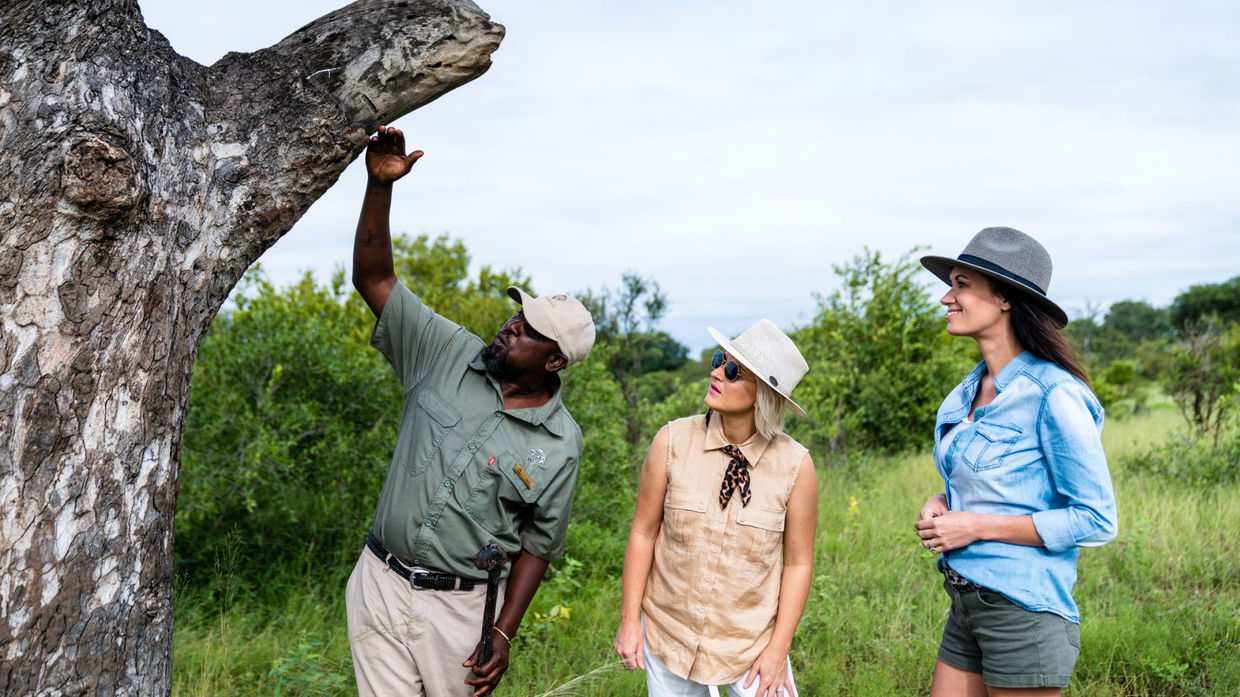
A perfect time to walk
Right now, with smaller creatures buzzing to life and the bush lush and vibrant in green, it’s the perfect time for a walking safari at Shumbalala Game Lodge. Walking through nature allows you to appreciate details that are easily missed in a vehicle - details that will stay with you long after the safari ends.
Are you ready to walk through the wild with us?
Further Reading
When most people picture a South African safari, they imagine dry landscapes, clear skies, and easy animal sightings — all hallmarks of the winter dry season. But there’s another side to the bush, one that arrives slowly with the heat, the clouds, and the promise of rain. This is the green season, and at Shumbalala Game Lodge, it’s a time of quiet transformation. From around November to March, the Lowveld enters summer....
October marks World Mental Health Awareness Month — a gentle reminder to pause, reflect, and take care of our inner world. And there’s no better place to do that than in the stillness of the bushveld. At Shumbalala Game Lodge, we often see it — the quiet shift in our guests as they begin to unwind. Out here, surrounded by nature, there’s no rush. No schedule too full. No endless stream of...


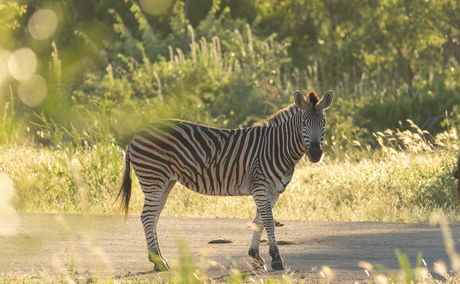
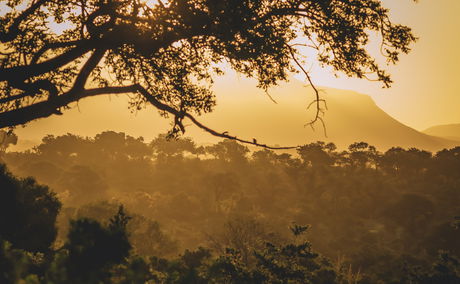


Share This Post